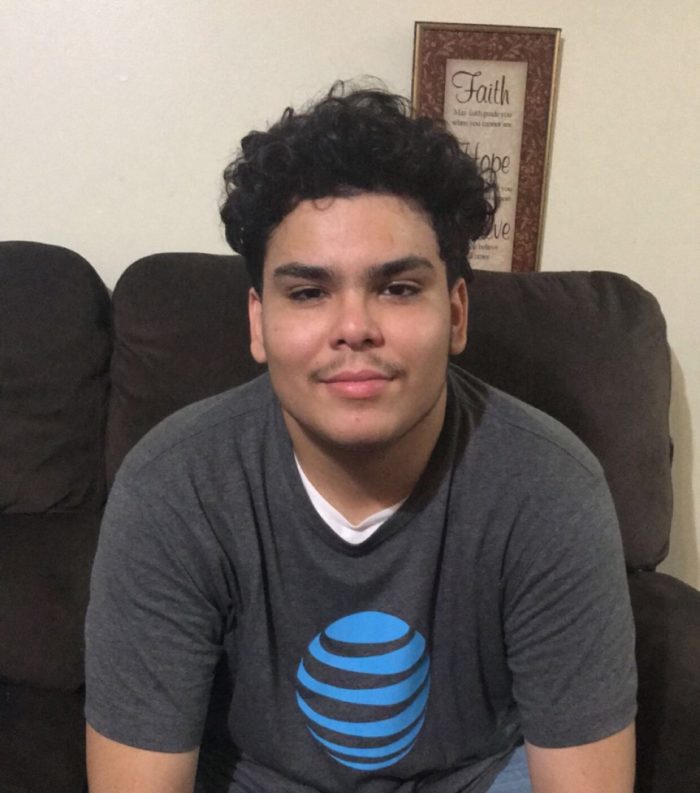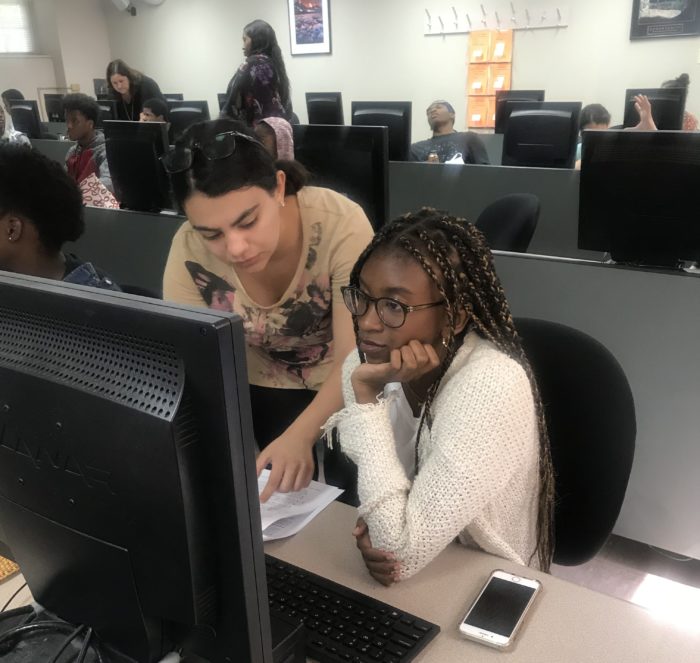If you had walked into an AT&T wireless store in certain neighborhoods in New York City this summer, you might have been struck by the youthfulness of some retail staff members. That’s because a dozen of them were teenagers, brought on board as interns in a program designed to give them an early taste of retail experience.
“We thought it would be really cool if we could get student interns into the stores learning about this technology everyone has in their pockets,” says Jeremy Agyemang, a supervisor for the program. The early work experience gives these teens a leg up as they hit the job market during and after college. “You go out and apply for a job, and you need experience no matter what age you are.”
The retail internship program is a partnership between AT&T and DreamYard, a Bronx-based art center and college-prep high school. The young workers, who put in 20 hours a week for five weeks, engage in tutorials on the phones and accessories on sale, hone their customer-service skills, and take on other responsibilities. “They really get this mentorship going from the supervisors and the store managers as well,” Agyemang says. “They’re trained on how to be self sufficient. I think it’s great because you don’t get to have this type of experience under the age of 18.”

Alex Reyes of the Bronx, who took part in the AT&T retail program (Photo courtesy of DreamYard)
AT&T’s collaboration with DreamYard is one of many the company has pursued in promoting STEM education (the acronym for science, tech, engineering and math), notably in New York City schools, where AT&T has invested more than $10 million in students over the last five years.
“AT&T has long recognized the responsibility we have to support students and connect them to the skills demanded in today’s economy, especially across our industry,” says Marissa Shorenstein, president of AT&T’s Northeast Region. This year, AT&T contributed an additional $1 million to local education programs, giving hundreds more students access to free programs that can equip them with skills they’ll need to succeed in a tech workforce.
The programs are designed to be inclusive, reaching out to underserved populations. “We have expanded our support to programs that serve homeless youth and youth in foster care,” Shorenstein continues. “We are committed to supporting programs that provide all students with the skills they will need to succeed throughout their professional careers—especially those who wouldn’t otherwise be able to access STEM education.”
It’s not just corporate social responsibility driving the programs, but also a practical demand for skilled workers. According to a study released last year by the U.S. Bureau of Labor Statistics, the number of STEM jobs in America grew more than 10% from May 2009 through May 2015, twice as fast as other jobs. The total number of STEM jobs reached nearly 8.6 million, or 6.2% of all U.S. employment. While the U.S. has worked to expand STEM education, many experts believe the country is being outperformed by other nations in this area and must do more to compete.
In partnering with DreamYard, AT&T chose a skills-building organization whose mission is to use “the arts, digital tools, and social justice to transform students, schools, and communities.” For the students in the retail program, it’s partly a confidence-building exercise. “I had a few people who told me they were going to be really bad at this job,” says program director Agyemang, “but I had faith in them.” The students were simply nervous about their new roles, but got used to it all: talking with customers, sticking to a schedule, being adaptable—“basic life skills [that] translate in any kind of job,” Agyemang says.
Alex Reyes, a 17-year-old from the Bronx’s Hunts Point neighborhood, relished the AT&T experience. “I’ve had so much fun. I love the environment, I love being there. It’s going to help me in the long run,” says the college-bound student, who plans to major in business or finance.
On the other end of the city, going from north to south, is the College of Staten Island, which welcomed a cohort of 25 high-school-aged boys and girls to its campus this summer for an AT&T-supported program called First Star Academy. The youth are in foster care, and thus part of an especially vulnerable community that only sees about 3% of its children graduate from a four-year college.

In a summer class at First Star Academy in Staten Island, where students have an opportunity to dive into STEM subjects (Photo courtesy of First Star Academy)
First Star CSI began two years ago with the students visiting the campus one Saturday each month during the regular school year to participate in academic and life-skills development programs. But this summer they actually lived on campus in dorms that director Senemeht Olatunji says are “apartment-like,” with full kitchens and bathrooms, giving the youth an “independent living experience.”
“The program is amazing,” says Jessica Gonzalez, a 16-year-old from Brooklyn who attended First Star. “College is right around the corner [and] it’s very beneficial.” One class in particular, on social justice, made a big impression on Gonzalez, who hopes to pursue a law degree down the road.
Gonzalez and her peers also took a three-week, geographic-information systems class, part of their STEM training made possible by funding from AT&T. “The course is a framework for gathering, managing, analyzing and integrating many types of data,” Olatunji says. “It analyzes spatial location and organizes layers of information into visualizations using maps and 3D scenes. Through a mixture of lecture and lab, students created map visuals on topics of their choosing.”
Olatunji also says the students are learning about financial literacy and the nuances of the foster-care system, while receiving support for issues that arise at home or in school. Making the program relevant to the students is a top priority. “They’ll let you know if a program is worth their time; if it’s not, they’re not going to engage and they’re not going to come,” Olatunji says. “One hundred percent of our students returned [and] they trust us. … It’s like a family.”
Olatunji believes AT&T’s emphasis on introducing the students to STEM ideas could make a difference their educational direction. “Their funding really gave the students a better understanding of who they can be,” Olatunji says. “Many of them were a little hesitant about engaging in STEM, but once they [did], it really opened up their eyes.” Olatunji adds that a point of entry to STEM education “is profoundly important to young people, especially young people of color, and I know that the funding we received from AT&T provided them access that they would have never had.”